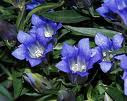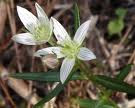[ . BACK to Worldkigo TOP . ]
:::::::::::::::::::::::::::::::::::::::::::::::::::::::::::::::::::::::::::::::::::::::::::::::::::::
............. German Saijiki
Liste Deutscher Jahreszeitenwörter
Ein Deutsches Saijiki / German Saijiki
:::::::::::::::::::::::::::::::::::::::::::::::::::::::::::::::::::::::::::::::::::::::::::::::::::::
Frühling Spring
 Blumen und Pflanzen: Anemone
Blumen und Pflanzen: Anemone . Baumblüten (auch in Deutschland besonders die Kirschblüte
Cherry Blossoms (sakura, Japan) ), Knospen,
Flieder (lilac, Syringa)
Zwiebel- und Knollengewächse (Tulpen
Tulip , Narzissen),
. Maiglöckchen 鈴蘭 suzuran . , Waldmeister,
Weide, Weidenblüten, Weidenkätzchen
Tiere: Vogellied, Nachtigall, Nestbau (...
Spring at the Zoo , also Bird's Nest), Vogelbrut, Frösche
(Frog (kawazu, kaeru) , Quaken, Lamm, Kitz, Kalb, Küken, Maikäfer
Natur: Vorfrühling > Altschnee
Snow (yuki) , Firnschnee, Schneematsch, Schneeschmelze > Sturzbäche, brüchiges Eis, Wind .. .. .. .. ..
WIND in various kigo , hoher Wellengang (im Herbst wie im Frühjahr), Mooreinsamkeit (Frühling und Winter), Föhn (in bergnahen Gebieten) ,
Gentle breeze, soft breeze, Linde Lüfte
Feste, Feiertage und traditionelle Bräuche: Karfreitag, Ostern
Easter , Pfingsten,
Walpurgis Night (walpurgisnight) (25.02. oder/und 01.05), Bittgang, Prozession (Fronleichnam
Corpus Christi Procession ), Almauftrieb (
Cowbells (Kuhglocken, Germany), Muttertag (2. Sonntag im Mai
Mother's Day )
Beispielhaiku:
Drüben noch Firnschnee
hier öffnet sich weit dem Blau
die Wolkendecke
(Erica Lauer-Below)
Ein Kirschblütenzweig
aus meines Freundes Garten schmückt
jetzt mein Zimmer
(Rolf Boehm)
Links
http://www.das-freizeitportal.de/news/walpurgisnacht.shtml
http://www.karo.b-hoffmann.de/Dat/Fruehjahr.html
:::::::::::::::::::::::::::::::::::::::::::::::::::::::::::::::::::::::::::::::::::::::::::::::::::::
Sommer Summer
 Blumen und Pflanzen:
Blumen und Pflanzen: wogendes Getreidefeld, Beerenernte, Rosen, blühende Bergwiesen, gemähte Wiesen, Bauerngarten, Feldrain, Kräuter, Fülle und Farbigkeit der Natur, Kamille, sattes Grün der Bäume, Baumschatten, rauschende Bäume,Schilf, Rebhänge
Tiere: Insekten > Fliegen, Schmetterling, Bienen
Bee (mitsubachi) , Hummeln, Wespen, Grillen, Libellen, Heuschrecken, Leuchtkäfer
Fireflies (hotaru) (05) (Japan) , Fische, Schnecken, Eidechsen, Salamander, Vipern.
Natur: Blendender Mond, roter Mond (see
.. .. .. .. MOON and its LINKS..), Sonnenglast, flimmernde Hitze, lange Tage, Tautropfen, Gewitter, Regenbogen, Sommersonnenwende, schönste Wolken, Rinnsal
Trockenheit, sonnenverbranntes Feld
Schwüle
Feste, Feiertage und traditionelle Bräuche: Johannisfeuer (24.Juni), Michaelistag (29.September - Spätsommer), Feldbegehung (vor der Ernte), Siebenschläfer (27.Juni), Hundstage
Dog Days (doyoo, Japan) (23.Juli - 23.August)
Fronleichnam, Fronleichnamszug
Mai, der Wonnemonat
Beispielhaiku:
Blendender Vollmond -
nur sein Licht auf den Wellen
schmerzt nicht das Auge.
(Imma von Bodmershof)
Michaelistag
es regnet heute füttert
der Penner Schwäne
(Mario Fitterer)
Regenbogenzeit -
ein Kind hüpft barfuss
durch Pfützen
(Andrea D´Alessandro)
Links:
http://www.klosterkirche.de/zeiten/trinitatis/johannis.php
http://www.rosen-romantik.de
Ein japanische Rosenseite:
http://www.sun-inet.or.jp/~setoh/
:::::::::::::::::::::::::::::::::::::::::::::::::::::::::::::::::::::::::::::::::::::::::::::::::::::
Herbst Autumn

Blumen und Pflanzen: Obsternte (Äpfel, Birnen, Pflaumen), Buntlaub (see
Leaf Watching ), Blätterfall (see
Fallen leaves (ochiba) , Welklaub, Stoppelfeld, Getreidestoppeln, abgeerntete Felder, leere Felder, Astern, Chrysanthemen (see
Chrysanthemum ), Pilze, Kastanien (see
Horse Chestnut (Part 2) , Nüsse, Baumfrüchte, Samen von Gräsern und Stauden, Rebhänge
Hagebutte (rose hip)
Tiere: Spinnennetze
Spiders , Eichhörnchen, Igel, Hase, Mäuse, Hamster, Heimtreiben der Schafherden, Vogelzug (vor allem in Verbindung mit großen Vögeln wie Gänsen (see
Snow Geese ), Schwänen oder Störchen)
Natur: Kalter Wind
WIND in various kigo , Sturm, klarer Sternenhimmel, klare Sternbilder, Sternschnuppen (Leoniden
Leonid Meteor Shower .. .. Geminid Meteor Shower), schönste Sonnen, Bergzacken (klarste Sicht im Herbst), rötliches Sonnenlicht, hoher Wellengang (im Herbst wie im Frühjahr), Sturm
Typhoon (Japan)
Feste und Feiertage und traditionelle Bräuche: Michaelistag (29.September), Winzerfest, Schäferlauf, Stoppelfeld(-lauf), Drachensteigenlassen,
Oktoberfest (Germany) , Erntedank, Almabtrieb (see
Cowbells (Kuhglocken, Germany) , Allerheiligen (1.November
All Saints’ Day .. All Souls’ Day, Hallowe’en), Hubertusjagd (3. November), Mauerfall (9.November), St. Martin (11.November), Martinsgans (11.November)
Beispielhaiku:
Stoppelfeldlauf -
ein Schäferhund
geht in Führung
(Andrea D`Alessandro)
Leer sind die Stühle
rings um den Tisch im Garten.
Nur Blätter zu Gast.
(Friedrich Rohde)
Links:
http://www.sanktmichael.de/heilige/martin.htm
http://www.photogenic-art.com/herbst/herbstgarten.htm
http://www.markgroeningen.de/schaf.htm
:::::::::::::::::::::::::::::::::::::::::::::::::::::::::::::::::::::::::::::::::::::::::::::::::::::
Winter
 Blumen und Pflanzen:
Blumen und Pflanzen: Christrose, Weihnachtsstern, Zaubernuss, kahle Bäume, nackte Zweige, dunkle Nadelgehölze, blasses und verdorrtes Gras/Schilf, Misteln (see
Mistletoe ), Schneeglöckchen, Krokusse > Winterende
Barbarazweige, Barbara twigs
Tiere: streitende Amseln, hungrige Tiere, Streit um Futter/Körner, Reh, Hasen, Kaninchen, Standvögel, Futterhaus, Futterraufe, Krähen (schwarzes Gefieder, Krächzen , see
Crow, Raven karasu (Japan))
Natur: Schnee (see
Snow (yuki) Japan) , kalter Mond, Eis, Rauhreif, kurze Tage, farblose Seen, Mooreinsamkeit (Winter und Frühling), Firnschnee
Snow (yuki) (Winterende)
Feste und Bräuche: Barbarazweige (4.Dezember), Adventszeit (see
Advent) > Kerzenlicht, Vorweihnachtsrummel, Weihnachten (see
Christmas ), Silvester (see
Last Day of the Year (oomisoka, Japan) > Karpfenessen, Neujahr (see
New Year ), Valentinstag (14.Februar, see
Valentine’s Day ), Karneval (see
Carneval ), Fasching, Fastnacht, Aschermittwoch, Walpurgisnacht
Walpurgis Night (walpurgisnight) (25.Februar und/oder in der Nacht zum 01.Mai)
Myrrhe, myrrh
Ankunft = Advent = Geburt Jesus
Ankunft -
Durch Omas Geschichten dringt
Myrrhe
Heike Gewi, December 2008, Yemen
Beispielhaiku:
die Halbmondsichel
wetzt ihre blanke Schneide
am vereisten Turm
(Richard W. Heinrich)
die weißen Reiher,
über den Altschnee segelnd,
warten aufs Mondlicht
(Carl Heinz Kurz)
unterm Apfelbaum
so viele Spuren im Schnee,
und schon die Knospen
(Horst Ludwig, 2001)
:::::::::::::::::::::::::::::::::::::::::::::::::::::::::::::::::::::::::::::::::::::::::::::::::::::
TOPICS and KEYWORDS
. Berlin Wall (Berliner Mauer)
. Dietrich Bonhoeffer
Gemütlichkeit - coziness (fb)
. Günter Grass
. Martin Heidegger
. Franz Kafka
. Hans Küng, Theologe
. Chen-ou Liu, a Germanophile
. Karl Marx .
. Bernhard Schlink
. W. G. (Winfried Georg) Maximilian Sebald
. Sophie Magdalena Scholl
Die Geschwister Scholl, Sophie und Hans
. Christa Wolf .
(18 March 1929 - 1 December 2011)
:::::::::::::::::::::::::::::::::::::::::::::::::::::::::::::::::::::::::::::::::::::::::::::::::::::
:::::::::::::::::::::::::::::::::::::::::::::::::::::::::::::::::::::::::::::::::::::::::::::::::::::
Namen des Mondes, names of the moon
Januar: Hartmond, Eismond, Schneemond, Wolfsmond
Februar: Narrenmond, Schmelzmond, Taumond
März: Frühlingsmond
April: Ostermond
Mai: Weidemond, Wonnemond, Marienmond
Juni: Brachmond, Rosenmond
Juli: Heumond
August: Erntemond, Sichelmond
September: Herbstmond
Oktober: Weinmond, Dachsmond
November: Nebelmond, Wintermond, Windmond
Dezember: Julmond, Christmond, Heiligmond, Wolfsmond, Schlachtmond
www.wetter-mensch-natur.de
(see more about kigo and
.. .. .. .. MOON and its LINKS..)
:::::::::::::::::::::::::::::::::::::::::::::::::::::::::::::::::::::::::::::::::::::::::::::::::::::
Links:
http://www.gartenspaziergang.de/pf_zaubern_1.html
Allgemeine Links zum Brauchtum:
http://www.brauchtum.de/
http://www.bauernregeln.net/
http://www.brauchtumsseiten.de/
Ein Spielfilm über den Wechsel der Jahreszeiten:
http://www.fruehling-sommer.de/
Ganz besonders zu empfehlen ist für alle Haiku-Autoren die Seite:
http://www.wetter-mensch-natur.de/
Dort ist wirklich alles zu finden, was man sich zu den deutschen Jahreszeitenwörtern nur wünschen kann.
Bauernweisheit
http://www.gartentraum-plan.de/html/bauernweisheit.html
Feste aller Monate
http://www.feste-der-religionen.de/
xxxxxxxxxxxxxxxxxxxxxxxxxxxxxxxxxxxxx
Copy from ... www.wetter-mensch-natur.de:
"Phänologie, oder einfacher der Naturkalender, ist eines der lohnendsten und interessantesten Kapitel für alle, die sich für und an der Natur begeistern können. Beobachtungen und resultierende Erfahrungen sind fast unerschöpflich.
Kein Jahr gleicht dem anderen, sagt man. Das hat seine Berechtigung. Trotzdem rennen wir bei den ersten warmen Sonnenstrahlen im Frühling hinaus in den Garten, um schon mal die Gartengeräte bereitzustellen. Am 21. März ist zwar Frühlingsanfang, es muss aber noch lange kein Frühling sein, denn 6 Wochen Differenz zwischen den Vegetationszuständen in verschiedenen Jahren sind keine Seltenheit. Es kann fatale Folgen haben, wenn man sich z. B. nur nach den Aussaatzeiten der Samenpackungen richtet, ohne dabei die Natur zu beobachten. Sehr viel verlässlicher als der altbekannte Kalender mit 4 Jahreszeiten in den 12 Monaten ist der »Naturkalender«, denn für Pflanzen ist die Tageslänge und die Temperatur entscheidend und nicht das Datum.
In vielen geographisch wärmeren Gegenden haben die verschiedenen Jahreszeiten ihren Rhythmus, von einem Tag zum anderen wird es dauerhaft warm, Frühjahrsstürme und Regenzeiten sind relativ pünktlich. Bei uns, in Mitteleuropa, ist das nicht so. Länger anhaltende Hochdruckgebiete sind in der Regel eine Ausnahme, und die zuverlässigste Wetterlage finden wir im Herbst, aber auch das nicht jedes , Jahr. Genauer sind hier die Naturbeobachtungen.
Das Jahreszeitempfinden die Schneeglöckchen und Weidenblüte, Löwenzahnblüte, erntende Maschinen, reife Früchte und fallendes Herbstlaub ausgelöst, und ist von Ort zu Ort und Jahr zu Jahr zeitlich völlig unterschiedlich. Jede Jahreszeit hat in der Natur ihren eigenen, unverwechselbaren Charakter und ihr eigenes Gesicht, die sich in den typischen »Kennpflanzen« widerspiegeln, die uns ihrerseits Rückschlüsse auf das Klima in der unmittelbaren Umgebung geben. Ob die Jahreszeiten in der Natur ihre Optima erreicht haben, verrät uns nicht der Kalender, sondern nur die Natur selbst. Diese »Eintrittszeiten« sind von Ort zu Ort verschieden. In 50 km Entfernung erfreut uns schon die Apfelbaumblüte, wobei vor Ort erst die ersten grünen Knospen zu sehen sind. Wer sich nach den Naturkalender richtet und zudem noch das Wetter beobachtet, kann im Garten eigentlich kaum mehr Fehler machen."
xxxxxxxxxxxxxxxxxxxxxxxxxxxxxxxxxxx
Edited by Andrea D`Alessandro
January 2005
Photos by Andrea D`Alessandro
:::::::::::::::::::::::::::::::::::::::::::::::::::::::::::::::::::::::::::::::::::::::::::::::::::::
... ... ... Deutsche Kigo in der Wikipedia
:::::::::::::::::::::::::::::::::::::::::::::::::::::::::::::::::::::::::::::::::::::::::::::::::::::
A new German Saijiki Project, started in 2005
"Mit dem japanischen Wort
fudo (風土 fuudo) wörtlich 'Wind und Erde') ist die natürliche Umwelt eines bestimmten Landes gemeint, nämlich sein Klima, sein Wetter, die geologische und produktive Beschaffenheit seines Bodens, seine topographischen und landschaftlichen Charakteristika." So leitet
Watsuji Tetsuro sein 1935 in Japan erschienenes Werk "Fudo - Wind und Erde" ein (Watsuji Tetsuro, Fudo - Wind und Erde, Der Zusammenhang zwischen Klima und Kultur, Darmstadt 1992, S. 6).
Das Saijiki-Projekt startet als erstes Literaturprojekt auf einer neuen Internet Literatur-Plattform. Der hamburger Haiku Verlag hat sich an der Entwicklung dieser Plattform 'www.e-Literat.de' beteiligt. Dort bestehen die allerbesten Voraussetzungen, um ein solches Projekt zu präsentieren. In dem Projektteil sind Haiku-Interessierte eingeladen Vorschläge für Jahreszeitenworte einzureichen.
. Deutsches Saijiki .
Read more about
Watsuji Tetsuroo 和辻哲郎
:::::::::::::::::::::::::::::::::::::::::::::::::::::::::::::::::::::::::::::::::::::::::::::::::::::
WKD : EUROPA SAIJIKI
[ . BACK to Worldkigo TOP . ]
:::::::::::::::::::::::::::::::::::::::::::::::::::::::::::::::::::::::::::::::::::::::::::::::::::::

























